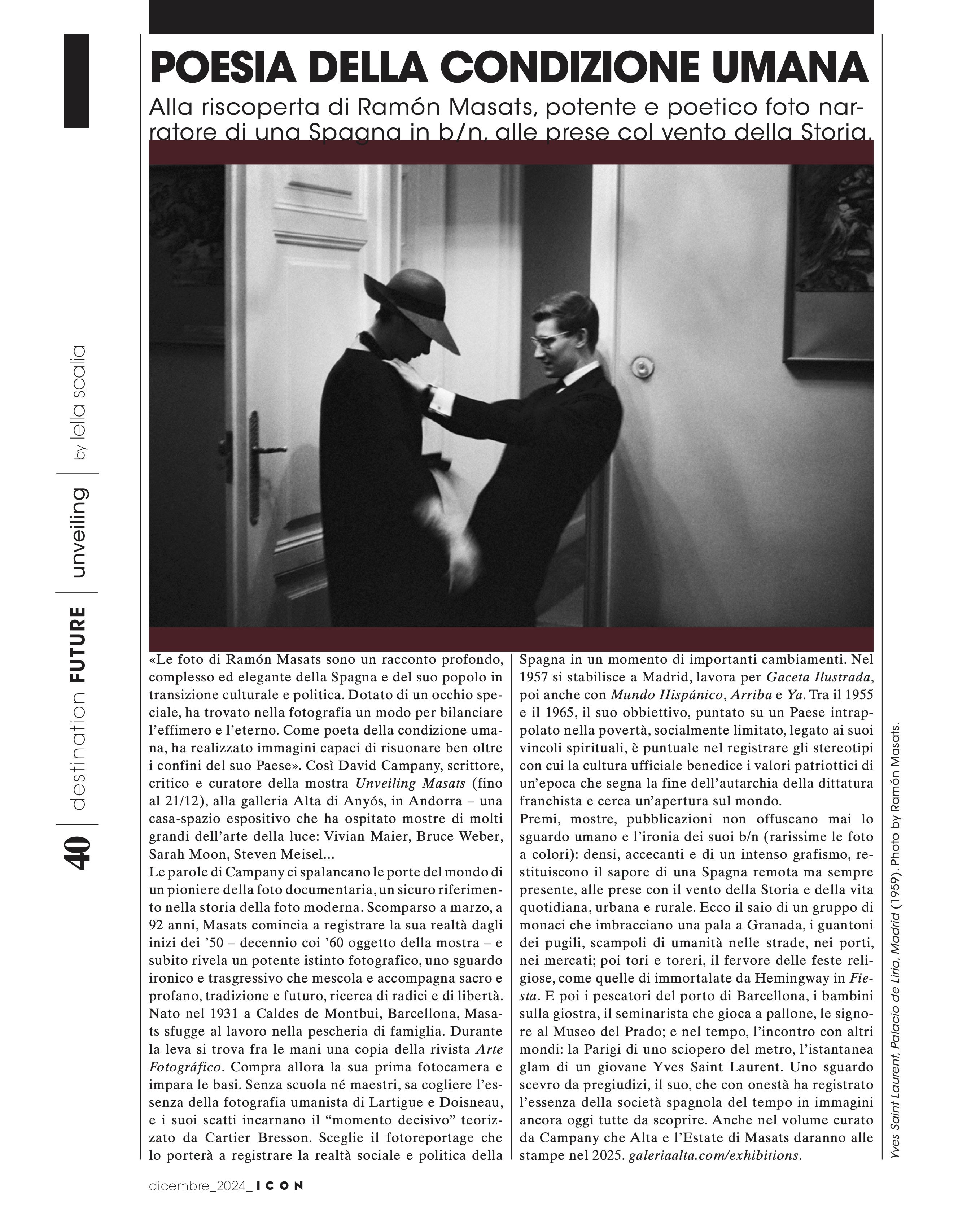
POETRY OF THE HUMAN CONDITION
Rediscovering Ramón Masats, a powerful and poetic photo-narrator of a black-and-white Spain, grappling with the winds of History.
"The photographs of Ramón Masats are a profound, complex, and elegant account of Spain and its people in cultural and political transition. Endowed with a special eye, he found in photography a way to balance the ephemeral and the eternal. As a poet of the human condition, he created images capable of resonating far beyond the borders of his country." Thus spoke David Campany, writer, critic, and curator of the exhibition *Unveiling Masats* (running until December 21) at the Alta gallery in Anyós, Andorra—a space that has hosted exhibitions by many great luminaries of light art: Vivian Maier, Bruce Weber, Sarah Moon, Steven Meisel...
Campany's words open the doors to the world of a pioneer in documentary photography, a significant reference in the history of modern photography.
Masats passed away in March at the age of 92. He began documenting his reality in the early 1950s—the decade along with the 1960s that is the focus of this exhibition—and immediately revealed a powerful photographic instinct, an ironic and transgressive gaze that intertwines and accompanies the sacred and the profane, tradition and future, seeking roots and freedom. Born in 1931 in Caldes de Montbui, Barcelona,
Masats escaped working in his family's fish shop. During his military service, he came across a copy of *Arte Fotográfico*. He then bought his first camera and learned the basics. Without formal schooling or teachers, he grasped the essence of humanist photography as seen in Lartigue and Doisneau's work; his shots embody Cartier-Bresson's theory of the "decisive moment."
He chose photojournalism, which led him to document Spain's social and political reality during a time of significant change. In 1957, he settled in Madrid, working for *Gaceta Ilustrada*, later contributing to *Mundo Hispánico*, *Arriba*, and *Ya*. Between 1955 and 1965, his lens focused on a country grappling with poverty and social limitations while still tied to its spiritual bonds. His work accurately captured the stereotypes with which official culture blessed the patriotic values of an era marking the end of Franco's autarky and seeking an opening to the world.
Awards, exhibitions, and publications never overshadowed his human gaze and irony in black-and-white images (color photos are rare): dense, blinding, and graphically intense, they convey the flavor of a distant yet ever-present Spain grappling with the winds of history and daily life—both urban and rural. Here is a group of monks wielding shovels in Granada, boxing gloves, snippets of humanity on streets, at ports, in markets; then bulls and bullfighters, fervor from religious festivals like those immortalized by Hemingway in *Fiesta*.
There are also fishermen from Barcelona's port, children on carousels, a seminarian playing football, women at the Prado Museum; over time, encounters with other worlds emerge: Paris during a metro strike and a glamorous snapshot of a young Yves Saint Laurent. His perspective is free from prejudice; he honestly recorded the essence of Spanish society at that time through images still waiting to be discovered today.
This will also be reflected in the volume curated by Campany that Alta and the Masats Estate will publish in 2025.
